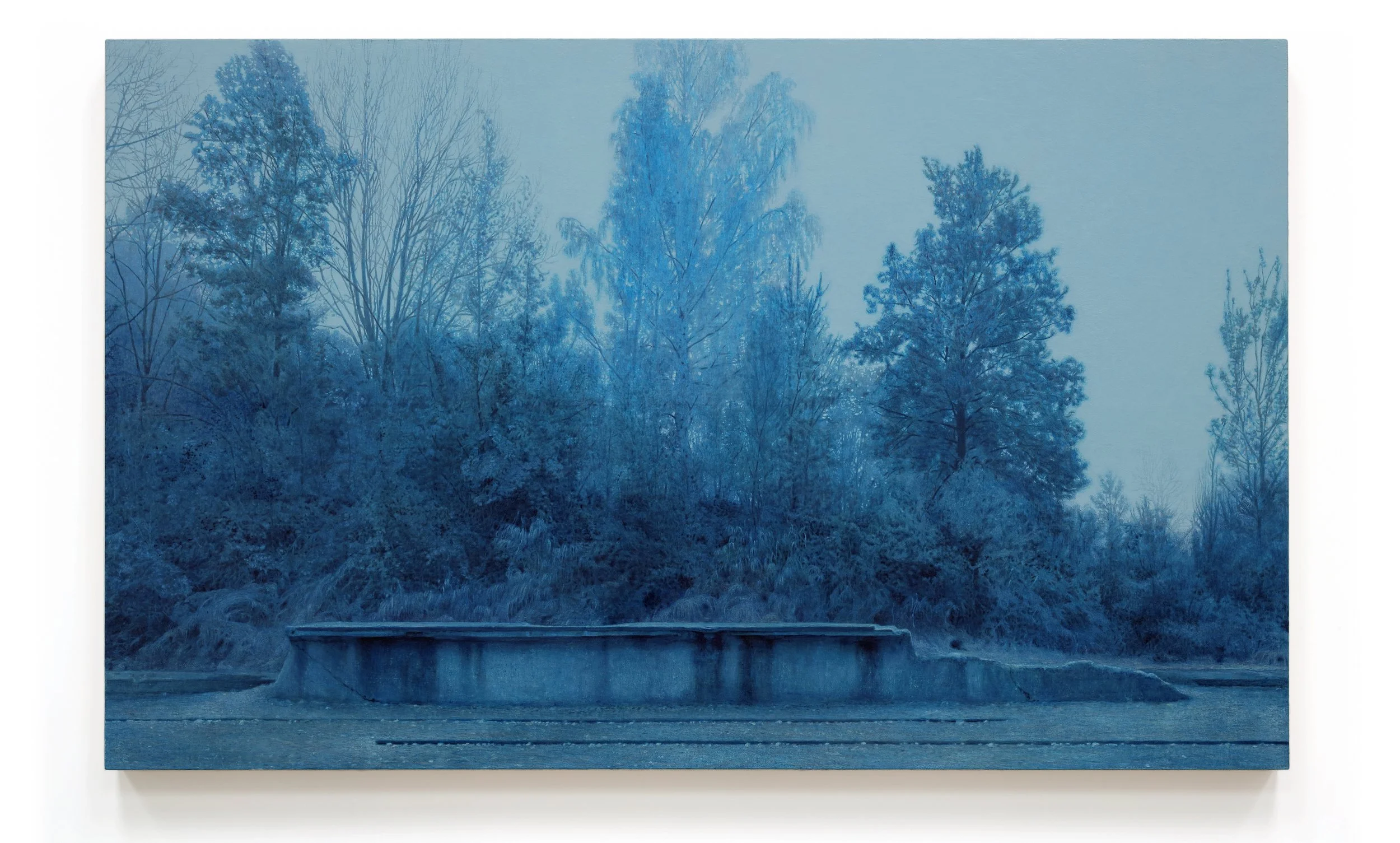Prussian Blue
Yishai Jusidman
Aug 24–Nov 26
There are colors whose historical implications overpower their formal and optical potential. One of them is Prussian blue. Discovered in 1704 in Berlin, it soon became the emblematic tint of the Prussian army and one of the earliest artificial pigments used by European painters. The color is also linked, through the grimmest of histories, to the extermination of European Jewry in World War II. The pesticide employed in the Nazi gas chambers, Zyklon B, left colored traces on their walls when its lethal compound chemically mutated into Prussian blue residues, some of which are visible to this day.
Tensions between color and history, perception and materiality, picture and painting, refinement and horror, are the subject of the series Yishai Jusidman (b. 1963, Mexico City) began in 2010. While the challenges of dealing with the Holocaust’s legacy was mostly eschewed by post-war painters, Jusidman proposes that painting might in fact reflect, and not only reflect on, the Holocaust. The imagery submitted by his brush captures — or, rather, recaptures— both excruciating presences and overwhelming desolation, plunging us into the labyrinths of historical and common memory.
Featuring five landscape paintings of the grounds of camps such as Birkenau and Sobibor, and a set of thirty cyanotypes shown here for the first time, the exhibition confronts the prohibitions of our collective imagination while enabling one of painting’s most notorious attributes: making silence speak.

